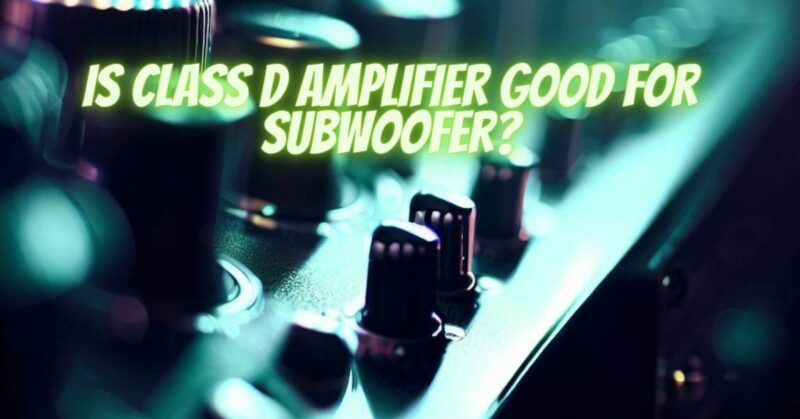The choice of amplifier for your subwoofer plays a crucial role in achieving the deep, powerful bass response that many audio enthusiasts crave. One type of amplifier that has gained popularity in recent years is the Class D amplifier. In this article, we will explore whether a Class D amplifier is a suitable choice for powering a subwoofer and examine its advantages and considerations in this context.
1. Understanding Class D Amplifiers:
Class D amplifiers, also known as digital amplifiers or switching amplifiers, differ from traditional Class A and Class AB amplifiers in their operating principles. They use pulse-width modulation (PWM) or other switching techniques to amplify audio signals efficiently. This efficiency results in less heat generation and reduced power consumption.
2. Advantages of Class D Amplifiers for Subwoofers:
- Efficiency: Class D amplifiers are highly efficient, meaning they waste less power as heat. This efficiency is particularly advantageous for subwoofers, as it allows them to deliver high levels of power without overheating.
- Compact Size: Class D amplifiers are typically smaller and lighter than traditional amplifiers, making them a practical choice for compact subwoofer designs or installations with space constraints.
- Less Heat: Since Class D amplifiers generate less heat, they can be placed in confined spaces or cabinets without the same concerns for heat dissipation that traditional amplifiers may have.
- Energy Efficiency: Class D amplifiers are energy-efficient, which can be beneficial for both your electricity bill and the environment.
3. High Power Output:
Class D amplifiers can provide substantial power output, making them well-suited for subwoofers that require significant power to reproduce deep bass frequencies accurately.
4. Considerations for Class D Amplifiers:
- Sound Quality: While Class D amplifiers have improved significantly in terms of sound quality, some audiophiles may still prefer the warmth and character of traditional Class A or Class AB amplifiers. However, modern Class D designs often offer excellent sound quality for most listeners.
- Subwoofer Compatibility: Ensure that the Class D amplifier you choose is compatible with your specific subwoofer model in terms of power requirements and impedance.
- Build Quality: As with any amplifier, the build quality and components used can vary among manufacturers. Look for reputable brands known for producing high-quality Class D amplifiers.
- Protection Circuitry: Class D amplifiers often come equipped with built-in protection circuitry to safeguard against overloads and overheating. Ensure that your chosen amplifier has adequate protection features for your subwoofer.
5. Personal Listening Preferences:
Ultimately, the choice of amplifier for your subwoofer may depend on your personal listening preferences. Some listeners may prefer the clean, efficient performance of Class D amplifiers, while others may lean towards the sonic characteristics of traditional amplifier classes.
6. Cost Considerations:
Class D amplifiers are often cost-effective compared to some high-end traditional amplifiers. This can make them an attractive choice for budget-conscious consumers without compromising on performance.
Class D amplifiers are a suitable and often excellent choice for powering subwoofers. Their efficiency, compact size, and ability to deliver high power output make them well-suited for reproducing deep bass frequencies with accuracy and impact. As with any audio component, the choice of amplifier depends on your specific needs, preferences, and budget. Whether you opt for a Class D amplifier or a traditional amplifier, the key is to ensure that it complements your subwoofer and sound system to deliver the rich and immersive bass experience you desire.


